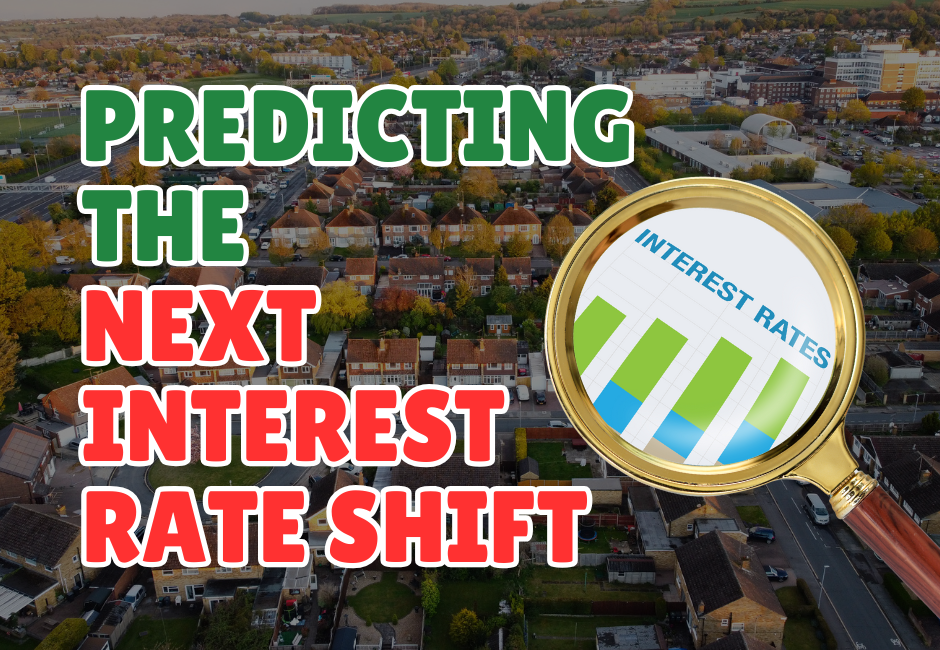
How Economic Indicators Predict the Next Home Loan Rate Shift
Introduction
Home loan interest rates are one of the most influential forces shaping the property market, directly impacting borrowing power, cash flow, and investment strategies. While lenders set their own rates, they don’t operate in isolation—these decisions are heavily guided by broader economic indicators.
By tracking inflation trends, employment rates, and GDP growth, property investors can anticipate where interest rates are headed and make more informed decisions. Understanding these signals not only helps investors navigate rate shifts but also positions them to refinance, adjust their portfolios, or lock in competitive mortgage terms before market changes take hold.
This article unpacks how core economic indicators affect home loan rates, explores predictive analytics that forecast rate movements over the next year, and highlights the most useful tools investors can use to stay ahead of the curve.
How Inflation, Employment Rates, and GDP Growth Impact Loan Rates
Inflation: The Leading Signal for Interest Rate Shifts
Inflation is arguably the most closely watched indicator when it comes to predicting interest rate changes. When inflation rises beyond central bank targets (typically 2–3%), monetary policymakers usually respond by raising interest rates to cool spending and stabilise prices. Conversely, when inflation is low or falling, central banks often cut rates to stimulate borrowing and economic activity.
Historical example:
In the 1970s and early 1980s, global inflation soared, driving interest rates to double-digit levels. More recently, in 2021–2022, inflation surged due to post-pandemic supply chain disruptions and stimulus measures, prompting a rapid series of rate hikes in many countries.
Investor takeaway:
Monitor inflation trends, particularly the Consumer Price Index (CPI), to anticipate borrowing cost changes. Rising inflation generally points to future rate increases, impacting mortgage affordability and cash flow forecasts.
Employment Rates and Wage Growth: Drivers of Consumer Demand
Employment rates signal the health of the labour market and the strength of consumer spending. When employment is high and wages are rising, people have more disposable income, often increasing demand for housing—which can contribute to inflation and prompt interest rate hikes.
On the flip side, rising unemployment tends to cool spending, reduce inflationary pressures, and create conditions for rate cuts.
Investor takeaway:
Watch employment figures and wage growth data closely. A robust job market often suggests higher rates on the horizon, while weakening employment numbers can signal upcoming cuts.
GDP Growth: A Measure of Economic Momentum
Gross Domestic Product (GDP) measures overall economic output. Strong GDP growth typically leads to higher interest rates as central banks aim to keep the economy from overheating. In contrast, weak GDP growth or contraction can prompt rate cuts to stimulate investment and spending.
Historical example:
The 2008–2009 Global Financial Crisis triggered steep rate cuts worldwide to shore up weakened economies. Similarly, during the COVID-19 pandemic, central banks slashed rates to historic lows to support recovery.
Investor takeaway:
Monitor GDP reports to understand whether the economy is expanding or slowing, as this informs central bank decisions on rate adjustments.
Predictive Analytics: Where Experts Expect Rates to Go in the Next 12 Months
Economists and market analysts use a mix of data and models to forecast interest rate movements. While no prediction is guaranteed, understanding current trends helps investors plan more strategically.
1. Inflation Trends and Central Bank Responses
If inflation cools and stays within central bank targets, we could see a pause in rate hikes—or even the start of rate cuts. But if inflation proves sticky, expect further increases.
Key indicators to watch:
- Consumer Price Index (CPI)
- Producer Price Index (PPI)
- Core inflation (excluding food and energy)
2. Labour Market Strength
A tight labour market with low unemployment and rising wages generally points to ongoing economic growth, making rate cuts unlikely. If job numbers falter, however, rate reductions may follow to stabilise the economy.
3. GDP Growth and Market Sentiment
Strong GDP growth usually aligns with stable or rising rates, while sluggish growth can push central banks toward cuts. Keep an eye on quarterly GDP reports and consumer sentiment surveys.
4. Central Bank Guidance and Bond Markets
Central banks often issue forward guidance on rate expectations. Additionally, the bond market—particularly 10-year government bond yields—serves as a leading indicator of future borrowing costs.
Investor takeaway:
Rising bond yields suggest markets expect higher rates; falling yields signal potential cuts.
Tools Investors Can Use to Stay Ahead of Rate Changes
Staying informed is critical. Here’s how savvy investors can track rate trends:
1. Official Economic Reports
- Inflation data (CPI, PPI)
- Employment statistics
- GDP growth reports
These are typically available through government statistical agencies.
2. Central Bank Announcements
Regular updates from the Reserve Bank of Australia (RBA) and other central banks offer critical insights into future monetary policy.
3. Mortgage Rate Forecast Tools
Many mortgage brokers and financial websites offer forecasting tools that blend historical data with market modelling.
4. Bond Market Indicators
Tracking government bond yields provides clues on market expectations. A steepening yield curve often points to higher future rates.
5. Financial News and Analysis
Follow reputable financial media, economic research houses, and think tanks to stay ahead of developing trends.
6. Mortgage Comparison Platforms
Platforms like RateCity and Canstar allow investors to compare live rates across lenders, helping to identify competitive deals as market conditions shift.
Final Thoughts
Economic indicators like inflation, employment rates, and GDP growth don’t just shape policy—they shape the very foundation of property investing. By paying attention to these signals, investors can anticipate home loan rate changes, adapt their strategies, and position themselves for success.
Predictive analytics suggests that the coming 12 months will be shaped by whether inflation cools, the labour market holds steady, and economic growth remains resilient. Investors who stay informed, leverage market data, and remain flexible with their financing choices will be better equipped to navigate whatever the next interest rate cycle brings.




